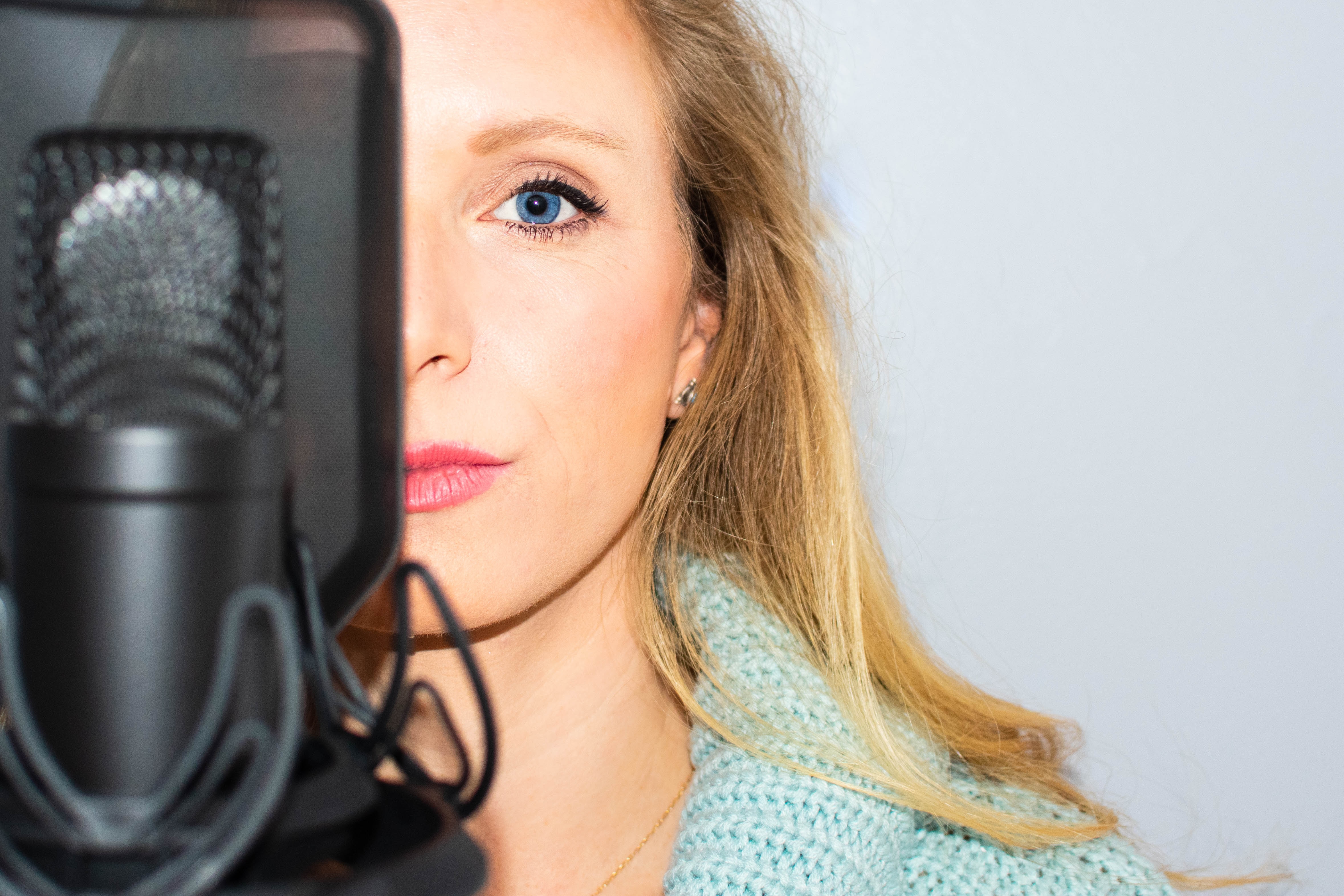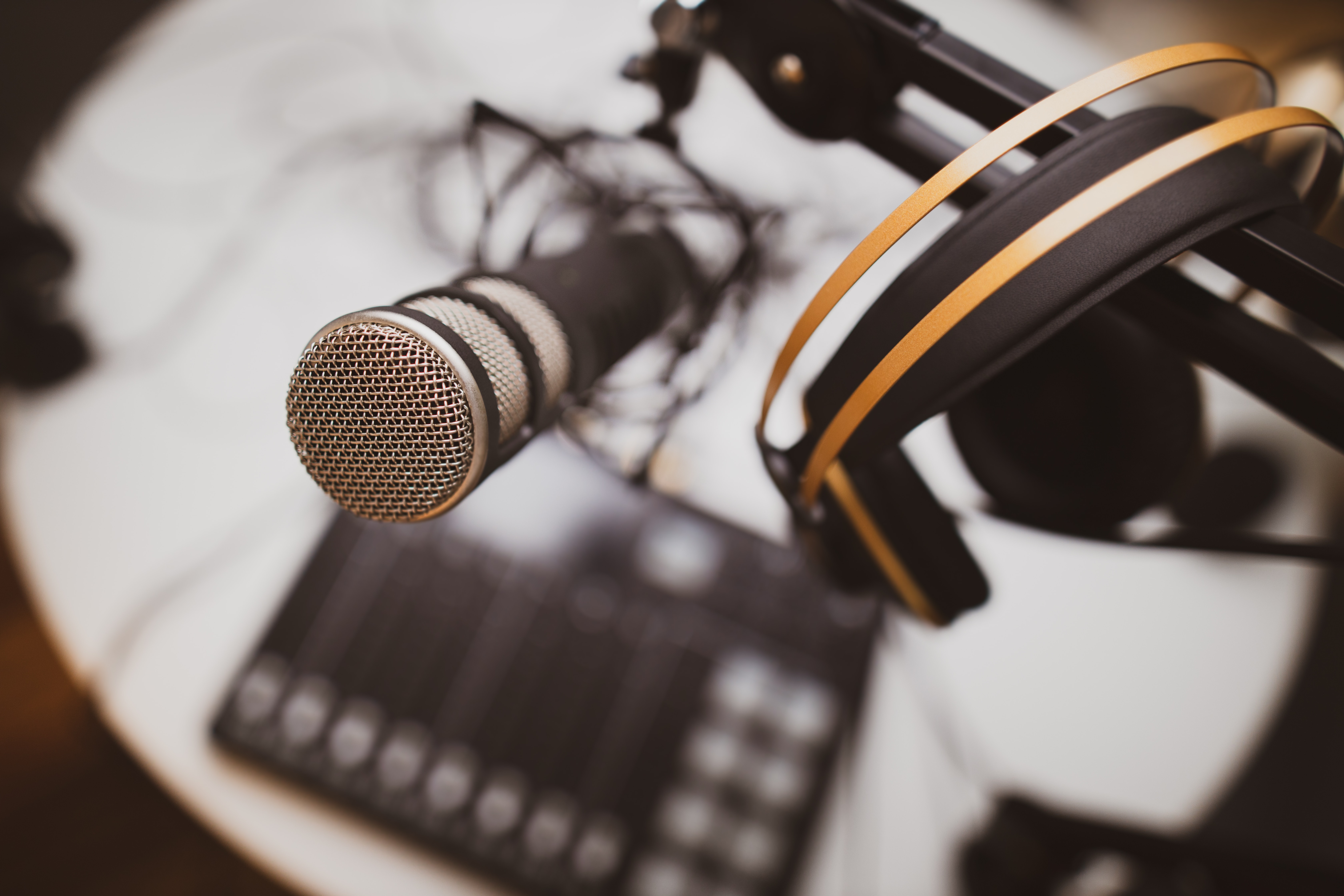9 Voice Acting Exercises for the Perfect Voice Over
Aug 08, 2023
Our Secrets to Sculpting and Strengthening Your Vocal Abilities
We’ve already told you — time and time again — that voice acting isn’t just about having a nice voice, right? It's also about flexibility, control, and precision. Basically, voice acting is like being an athlete. However, instead of your biceps, it's your vocal cords that are doing the heavy lifting.
An often underappreciated art form, voice acting is a key element that helps breathes life into characters and storylines — whether it's for a TV show, movie, video game, or commercial. And just like any other art, it requires practice. That’s where voice acting exercises come into play.
Think of it this way: voice acting exercises are to voice actors what stretches are to gymnasts. They help keep the vocal cords limber and prepared for a strenuous performance. Plus, voice acting exercises can help you to control your pitch, tone, volume, and articulation — all of which are crucial elements in the world of voice acting.
Simply put, these exercises are the unsung heroes of the voice acting world. But let’s not get ahead of ourselves here…
Before we even think about which voice acting exercises are better, it’s essential to understand exactly what they do. Let’s take a closer look.

The Benefits of Voice Exercises
Before we dive into the juicy part — AKA, the exercises themselves — let's first shine a spotlight on why you need to include voice acting exercises in your daily routine.
For starters, voice acting exercises serve a variety of purposes. From helping you warm up your vocal cords to improving your enunciation and broadening your vocal range, voice acting exercises can also help reduce strain and the risk of damaging your vocal cords.
Imagine being a boxer and stepping into the ring without any warm-up. You'd probably pull a muscle, right? The same goes for your voice. Without a proper warm-up, you risk straining your vocal cords — and trust us, that's not fun.
But it's not just about warm-ups. Some types of voice acting exercises can also enhance your performance by helping you get into character, adjust your tone, or even master tricky accents.
At the end of the day, and despite their differences, voice acting exercises do have one thing in common: they’re all aimed at honing your craft.
Our 9 Favorite Voice Acting Exercises
Ready to put your voice to the test? Great… because we've handpicked nine of our favorite voice acting exercises that you can start trying right now.
Whether you're looking to loosen up your vocal cords, strengthen your enunciation, expand your vocal range, or just maintain good vocal health, we've got you covered.
Each of these exercises is a stepping stone toward mastering the art of voice acting, and they're designed to be simple and impactful, ensuring that you're vocally prepared for any role that comes your way.
Let’s look at them closely:
1. The Humming Exercise
Think of the Humming Exercise as the 'push-up' of voice acting exercises – basic but highly effective. In short, this exercise is a fundamental tool in your vocal toolkit that can do wonders for your voice.
Start by standing or sitting with your back straight. Inhale deeply through your nose, filling your lungs with air. Now, it's time to hum. Slowly exhale, letting out a gentle, consistent hum. The goal here is to ensure the hum is as smooth and uniform as possible as you feel the vibrations in your throat, your mouth, and your nose.
Those are your vocal cords and resonating chambers waking up and getting ready for action.
This simple exercise is designed to warm up your voice, creating a wider vocal resonance and giving you more control over your voice. It's like prepping your vocal cords for the big performance ahead.
For example, if you're working on a character with a deep, gravelly voice, this exercise can help you warm up those lower register muscles. Plus, the humming exercise is perfect for reducing any pre-performance jitters, helping you to relax and focus.
2. The Straw Phonation
This one might sound silly, but bear with us — it's actually a staple in the world of voice acting exercises. It's called the “Straw Phonation”, and, yes, you'll need a straw.
Once you have your straw ready, take a deep breath, and start making sounds through it. You can hum, sing a scale, or even read a line from your script. The trick here is the narrowed pathway the straw creates. This narrow passage forces your vocal cords to operate more efficiently, improving your airflow and reducing vocal strain.
When it comes to the “Straw Phonation”, it's all about balance and control.
If you're voicing a fast-paced, energetic character, for example, this exercise can help you maintain control and prevent strain — even in the most intense recording sessions. Plus, it can also help you manage your breath over long, complex sentences and keep your voice steady during fast dialogue.
3. The Tongue Twister Workout
The “Tongue Twister Workout “isn't just a game you played as a kid; it's a voice actor's secret weapon. This voice acting exercise helps you work on your enunciation, speed, and fluency.
Choose a few tongue twisters and say them out loud, slowly at first. As you get comfortable, gradually increase your speed and make sure that every word and every syllable is clear and precise. This will help you improve diction and articulation, making every word you utter crystal clear.
"Peter Piper picked a peck of pickled peppers" might sound silly at first. But trust us, after running through it a few times, you'll find your tongue getting nimbler and your articulation sharper. It's a workout for your tongue and lips, enabling you to deliver even the most complex lines with ease.
4. The Yawn-Sigh Exercise
Ever had a big yawn followed by a sigh of relief? Well, that's precisely what the “Yawn-Sigh Exercise” is all about. A voice acting exercise that’s as relaxing as it sounds, it also offers a soothing warm-up for your vocal cords.
Begin with a big yawn (don't be shy!), stretching your jaw wide and drawing in a deep breath. As you exhale, let it transition into a sigh, letting the air flow smoothly from your lungs, through your vocal cords, and out of your mouth. This exercise will help relax your vocal cords as you learn to control your breath and decrease tension in your larynx.
This type of exercise is perfect if you're preparing for a laid-back, soothing voice-over — like narrating a bedtime story or a calming meditation guide. It's also a handy exercise to de-stress between recordings.

5. The Diaphragmatic Breathing
When it comes to voice acting, it's not just about your vocal cords — your breath plays a crucial role too. The “Diaphragmatic Breathing” exercise focuses on using your diaphragm for optimal breath control.
To do it right, place a hand on your belly. Take a deep breath in, filling your abdomen before your chest. You should feel your belly rise as your diaphragm descends, pulling air into your lungs. Exhale slowly, pushing the air out of your lungs with your diaphragm. By breathing with your diaphragm, you can get more air into your lungs, which translates to stronger, more sustained vocal delivery.
Just imagine delivering a powerful speech or portraying a commanding character. This exercise will give you the vocal strength and stamina you need while ensuring your voice doesn't run out of steam.
6. The Pitch Glide
The “Pitch Glide” is a fantastic exercise for stretching your vocal range and building vocal agility. It's like a playground for your voice, taking you on a journey from the lowest depths to the highest peaks of your vocal range.
To start, find your lowest comfortable note and slowly glide your voice up to your highest note. Then, glide back down to the low note. The goal here isn't to strain or push your voice but to smoothly transition from low to high and back again.
This voice acting exercise can be a real game-changer, especially if you're playing a character that requires dramatic shifts in pitch or tone. It’ll help you explore the full breadth of your vocal range, giving you the flexibility to slide between pitches with ease.
7. The Lip Trill
Ready for a fun one? The “Lip Trill” is all about loosening up your lips and vocal cords. It's the vocal equivalent of a horse blowing air through its lips.
To try it, take a deep breath and exhale while blowing air through your lips, creating a 'brrrr' sound. You're looking for a sustained, even sound, using just enough breath to keep your lips trilling. This exercise can reduce tension in your vocal cords, improve breath control, and is excellent for warming up your voice before a recording session.
So, if you're about to voice an energetic, talkative character, the “Lip Trill” is perfect for prepping your voice for the challenge ahead.
8. The Resonant Voice Exercise
The “Resonant Voice Exercise” is all about amplifying the natural resonance in your voice. Basically, it works just like turning up the volume on a stereo without straining your vocal cords.
Start by humming and then transition into an 'M' sound, as in 'Mmmmm.' You want to feel a sensation of vibrations in your mouth, lips, and nose. That's your voice resonating. This exercise increases your vocal power and richness, helping you to project your voice without straining your vocal cords.
If you're voicing a larger-than-life character with a powerful voice, working on this can be your secret sauce.
9. The Silent Laugh
Last but not least, we have the “Silent Laugh”. This voice acting exercise helps you relax your facial muscles, promoting a more natural and expressive voice.
Imagine yourself laughing without making any sound. Feel the muscles in your face and throat working? That's what you're aiming for! Using this method, you can enhance the expressiveness of your voice by engaging and loosening your facial muscles.
If you're working on a character with a cheerful, bubbly personality, the “Silent Laugh” is the perfect warm-up. It's like a facial workout, helping your voice mirror the character's emotions and energy.
Winding Down on the Vocal Workout
Voice acting isn't just about having a good voice — it's about having control, versatility, and endurance. And the secret to all this? Well, you've probably guessed it by now… its voice acting exercises.

So whether you're gearing up for a recording session, expanding your vocal range or trying to reduce strain, these voice acting exercises are key to building strength and flexibility and preparing you for any role that comes your way.
At A VO’s Journey, we’re all about championing the continual growth and versatility of your vocal abilities. Our wide range of VO Training courses is designed to help you unlock your voice's true potential — guiding you from the basics to the subtleties of voice acting every step of the way. That’s right: even when it comes to finding the perfect warm-up or voice acting exercise you need.
So, voice-acting friends, it's time to put these exercises to work! And remember: the best voice actors aren’t born; they’re made.






